2 July 2020: Home learning
Phonics
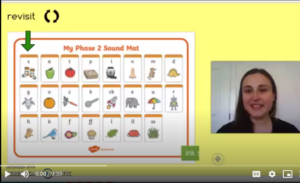
→Need more of a challenge? Can you help the alien escape?
Maths
Watch the number block 15 and 16 videos.
Mrs Palmer has 15 challenge cubes. She has shown the number 15 in 3 different ways.
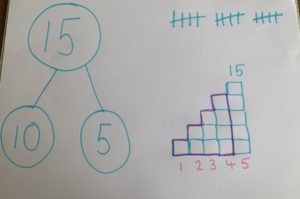
Can you show the number 16 in 3 different ways?
→Need more of a challenge? Print the part part whole model or draw your own to show the number 15 or 16 in different ways.
Let’s talk!
This week we will be focussing on developing your child’s communication and language skills through fun, family activities. Your child’s communication and language development is so important. It encompasses speech development, listening skills and understanding. The games this week will focus on these skills to support your child in becoming a good communicator.
What you will need:
- Building bricks e.g. lego or duplo
- Building instructions – pattern instructions OR rainbow instructions
- 2 players – 1 ‘engineer’ and 1 ‘builder’
How to play: The aim of the game is for the ‘engineer’ to look at the instructions and tell the ‘builder’ how to build the model.
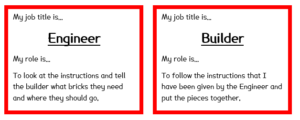
Why this game?
This game is a great way to support your child’s communication skills. When being the ‘Engineer’ they are encouraged to really tune into their listeners needs – all whilst giving instructions! When being the ‘Builder’ it is a great chance for your child to practice being a good listener. Responding with relevant comments or questions shows that your child is understanding what the ‘Engineer’ is asking them to do.
1 July 2020: Home learning
Phonics
Watch Geraldine Giraffe learn about ‘oo’
Read:
Can you read the oo words?

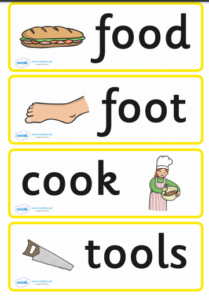
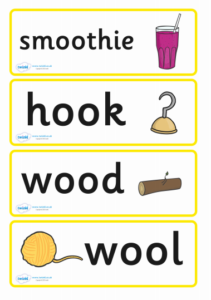
Which words had the long ‘oo’ sound and which words had the short ‘oo’ sound?
For example;
Food has the long ‘oo’ sound
Book has the short ‘oo’ sound
Activity:
You will need: magazines/newspaper, scissors, paper and glue.
Can you find any words in your magazine or newspaper with the digraph ‘oo’?
Cut them out and stick them on your ‘oo’ page.
Challenge: You could sort them into the long ‘oo’ and short ‘oo’ sound.
Here is an example of what it might look like (we have used different digraphs here).
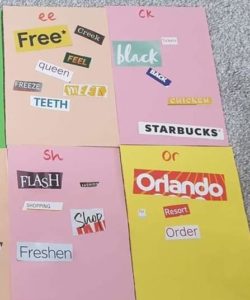
→Need more of a challenge? Can you read the ‘oo’ words you have found? How many syllables do they have?
Maths

Let’s talk!
This week we will be focussing on developing your child’s communication and language skills through fun, family activities. Your child’s communication and language development is so important. It encompasses speech development, listening skills and understanding. The games this week will focus on these skills to support your child in becoming a good communicator.
Follow my instructions
What you will need:
- Simple ingredients and utensils to make a snack – this could be cheese spread on crackers, cut up fruit or toast.
- 2 players
How to play:
The aim of the game is for your child to follow your instructions when making a snack. Your child will need to listen very carefully so that you don’t have to help at all. For example, verbal cues only rather than non-verbal (such as pointing).
To make this more challenging you could have different sized utensils or different coloured ingredients.
Here is an example below:
Making fruit salad
1.Get the largest banana from the fruit bowl.
2.Get one small and one large orange from the fruit bowl.
3.Get a handful of red and green grapes from the fruit bowl.
4.Use the smallest knife to cut the banana into slices and put it into the large, green bowl.
5.Peel the orange and separate into segments. Put it into the large, green bowl too.
6.Put 8 red grapes and 10 green grapes into the large, green bowl.
Make sure your child listens to what you say and doesn’t ask you to point. The aim of the game is for your child to understand your language through verbal instructions.
Why this game?
This game supports your child’s listening and understanding skills. Using size, colour and quantity when giving instructions will challenge your child to really tune into and understand what you are asking them to do.
PASS IT ON! Your child could then ‘pass it on’ and give the instructions to another family member. Challenge your child to only use their words and not use actions when giving their instructions.
30 June 2020: Home learning
Phonics

→Need more of a challenge? Can you use a narrative in your ‘oo’ writing? You could write a story all about an ‘oo’ word. It could be about a ‘book adventure’, ‘a search for food’ or ‘the magical boot’.

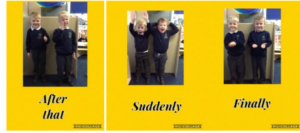
Maths
1.Watch the numberblock 15 and 16 videos.
2.Draw the number 15 and 16 on the floor using chalk or draw the numbers 15 and 16 on two pieces of paper.
3. Is the answer 15 or 16 to the following statements (adults please read the statements out loud):
- I am an odd number.
- I am the bigger number
- I am one big ten and 5 ones.
- I am an even number.
- I am one big ten and 6 ones.
- I am an odd number.
- I can make a square shape with my blocks.
- Half of me is 8.
- I am the smaller number.
→Need more of a challenge?


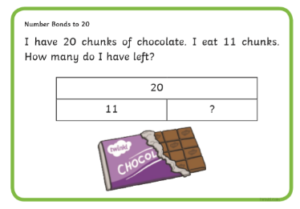
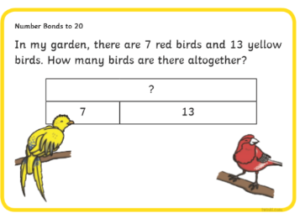

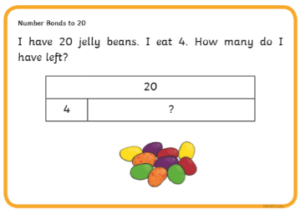
Let’s talk!
This week we will be focussing on developing your child’s communication and language skills through fun, family activities. Your child’s communication and language development is so important. It encompasses speech development, listening skills and understanding. The games this week will focus on these skills to support your child in becoming a good communicator.
Pirate treasure!
What you will need:
- An object to represent ‘treasure’. This could be a coin or a favourite teddy bear.
- 2 players/pirates
How to play:
The aim of the game is for one pirate to hide the treasure and describe where it is hidden. The other pirate needs to listen to the description and find that treasure!
Take it in turns to either hide the treasure or find the treasure. Remember only use words – no pointing or actions allowed!
Encourage good language skills such as;
- Pre-positional language e.g. underneath, on top, in front of, behind
- Descriptive language (what size is it? Colour?)
- Adventurous words
For example: “The treasure is in the largest room in the house. It is hiding underneath something red, sparkly and tiny.”
Why this game?
Just like yesterday’s game this activity supports your child’s vocabulary, listening and understanding skills. When describing where the treasure is hidden your child is challenged to use adventurous vocabulary and tune into the listeners needs. When finding out where the treasure is hidden your child is challenged to listen to the speaker and understand what they are saying.
Important reminder
Are you interested in the class zoom call? If so, please email today to let us know.
Some information if you missed it previously
Before the end of the school year, we are offering Zoom calls with children who remain at home . This will be a great opportunity to get together via zoom in small groups to end the school year.
If your child is still learning at home, and you’d like your child to be part of a Zoom call with Mrs Flynn, Mrs Palmer and some of their classmates, please email us.
Please email us by Monday 29th June to let us know if your child would like to take part.
When you email, you’ll need to provide the name that will appear in the Zoom call – we won’t allow anyone into the meeting if we’re not expecting them. Ideally, the name would be the child’s first and last name, but it can be your name. (And please make sure the name is appropriate.)
We will decide a date and time for this to happen – the zoom calls will be organised for the week beginning 6th July. We’ll send an invitation with the log-in details back to you. We’re sorry – there can’t be much flexibility about the date and time.
29 June 2020: Home learning
Phonics
Letter formation:
Can you practise your letter formation using the letter formation ditty’s?
Read:
Can you read the sentences and scan the QR codes to check you were correct? You can also click on the links below to reveal the answer.


→Need more of a challenge? Can you play the polysyllabic game?
Maths
This week we are going to learn about two teen numbers.
Numberblock 15 calls himself The Super-Secret Step Squad Agent.
What 5 numbers add together to make 15?
Numberblock 16 can make itself into a square. What other numbers are also square?
Can you solve the following problems?
What is half of 16?
What is half of 8?
How many sets of 4 make 16?
How many sets of 2 make 16?
How many ones make 16?
→Need more of a challenge?
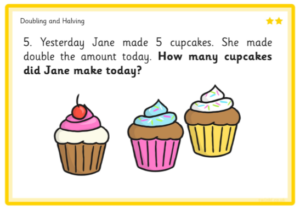
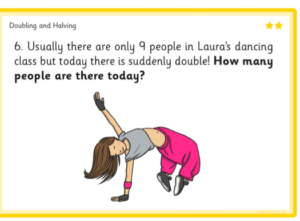
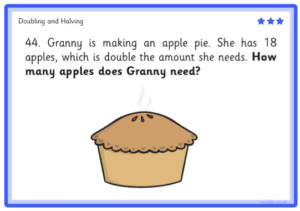
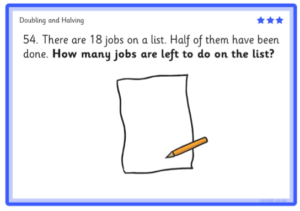
Let’s talk!
This week we will be focussing on developing your child’s communication and language skills through fun, family activities. Your child’s communication and language development is so important. It encompasses speech development, listening skills and understanding. The games this week will focus on these skills to support your child in becoming a good communicator.
Describe that thing!
What you will need:
- A collection of objects from around the house e.g. a teddy, banana, spoon, book.
- A bag/box to hide the objects inside
- Building bricks i.e. lego or duplo – these will be used as points in the game.
- 2 players – 1 ‘describer’ and 1 ‘listener’
How to play:
The aim of the game is for the ‘describer’ to describe the object hidden in the bag and the ‘listener’ to guess what it is.
Every time the ‘listener’ guesses correctly they get a brick for their tower. The ‘describer’ can collect bricks for their tower if they use any adventurous words.
Take it in turns to be either the ‘listener’ or the ‘describer’.
The person with the tallest brick tower at the end is the winner!
Why this game?
This game is a great way to support your child’s communication skills. When being the ‘describer’ they are encouraged to really tune into their listeners needs – as well as use adventurous words to describe something! When being the ‘listener’ it is a great chance for your child to practice being a good listener. When your child responds with relevant comments or questions it shows that they understand what the ‘describer’ is saying.
Home Learning Pictures
Last week, our book of the week was Monkey Puzzle. We had lots of lovely emails to share the stick puppets that you had made and we also had a couple of videos as some children recorded themselves re-telling the story.



Caroline (Hermione’s mummy) has been very busy in the school allotment picking the fresh fruit and vegetables that have been growing. Very soon, there will also be some potatoes too. We think it all looks delicious.
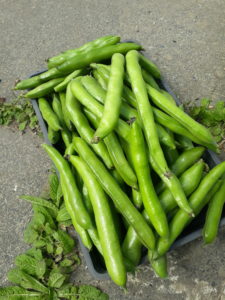

Yusuf and his siblings were asked to be part of a short film for CBBC. The short film is called Where did all the people go? Can you spot Yusuf in the video clip?
Please keep sending us updates on how you are getting on. We enjoy hearing from you.




Reminder:
Before the end of the school year, we are offering Zoom calls with children who remain at home . This will be a great opportunity to get together via zoom in small groups to end the school year.
If your child is still learning at home, and you’d like your child to be part of a Zoom call with Mrs Flynn, Mrs Palmer and some of their classmates, please email us.
Please email us by Monday 29th June to let us know if your child would like to take part.
Have a lovely weekend.
26 June 2020: Home learning
Phonics
Watch Geraldine Giraffe learn about ‘igh’.
Read:
Point to the words that have the ‘igh’ trigraph in them. Can you segment and blend the words?

Game:
1.Roll the dice.
2.Read the word next to the number.
3.Move to the next word if you roll the same number.
4.Take it in turns to read all of the words.
Parents/Carers: you could print or write the words on paper if they are too difficult for your child to read on your device.

→Need more of a challenge? Choose a pobble365 photo to inspire creative writing. You could try to include a narrative into your writing by using words such as one day, suddenly, then, next, after that and finally.

Maths

Literacy
1.Listen to the story ‘Something Else’ by Kathryn Cave
2.After listening to the story talk to your child about the story. You could read the following synopsis:
Something Else is excluded from everything because he looks different. He does not play the same games, eat the same food or draw the same pictures.
Then one day Something turns up and wants to be friends. However, Something Else does not want to be friends with this creature as he believes that they are not the same and he refuses to eat sandwiches with ‘Urgy stuff’ in them. He sends Something away and then suddenly realizes that he acts like all the other people who always sent him away.
Eventually Something Else and Something become best friends.
3.Ask your child to think about how the two creatures in the book are different from each other and how this makes them feel. For example:
- How did the blue creature feel when the other animals said he wasn’t like them?
- What could the other creatures have done to help the blue creature feel happier?
4.Even very different people can find things in common. Can your child now find similarities between the two creatures?
25 June 2020: Home learning
Phonics

→Need more of a challenge? Can you play the polysyllabic game?
Maths
1.Watch the Numberblock 14 video.
2.Using toys/objects from your house can you count out 14?
3.Print or make a part part whole model. Can you split your toys/objects into two groups? E.g. 7 is a part, 7 is a part and 14 is the whole.
4.How many different ways can you split 14?
→Need more of a challenge?
Can you split 14 into three parts?
For example 5 is a part, 2 is a part, 7 is a part and 14 is the whole.
Literacy
Can you find out some things people in your family like and dislike. You could video chat friends and ask them too. Are they different? Can you still be friends even if you like different things? Explore this.
I really like sewing. Mrs Palmer doesn’t like sewing but loves to garden. We are still friends!
24 June 2020: Home learning
Phonics
Watch Geraldine Giraffe learn about ‘ee’
1.Read the words.

2.Write the words that match each picture.

→Need more of a challenge? I spy! Can you read the words and find the matching object in your house? You might not be able to find all of the objects in your house! I wonder how many you will find?

Maths

Literacy
Can you draw something that you think makes you special? For example, you could be special because you can jump really high? Or because you are always good at making your friends happy. Adults you could share what you think makes your child special.
Your child could then draw something that makes someone they love special. They could share this with the person they love. How does it feel to tell someone why they are special? It makes us feel good to make others feel good.
This is a great activity for not only your child to feel special but to make others around them feel special too.
Extra activity: pass it on smile! We always talk to the children about how special a smile is. It can be passed on to LOTS of people so quickly. If you smile at someone they will often smile back, they then smile at the next person and there you have it, a big line of people passing on smiles. Can your child try this in the house or when they are outside. Not everyone will always smile back but that’s okay, they might not feel like smiling back but I’m sure you’re smile was still nice for them to see.
Zoom
Did you see the ‘daily message (19 June 2020)’ on the school news page?
Before the end of the school year, we are offering Zoom calls with children who remain at home . This will be a great opportunity to get together via zoom in small groups to end the school year.
If your child is still learning at home, and you’d like your child to be part of a Zoom call with Mrs Flynn, Mrs Palmer and some of their classmates, please email us.
Please email us by Monday 29th June to let us know if your child would like to take part.
When you email, you’ll need to provide the name that will appear in the Zoom call – we won’t allow anyone into the meeting if we’re not expecting them. Ideally, the name would be the child’s first and last name, but it can be your name. (And please make sure the name is appropriate.)
We will decide a date and time for this to happen – the zoom calls will be organised for the week beginning 6th July. We’ll send an invitation with the log-in details back to you. We’re sorry – there can’t be much flexibility about the date and time.
Some more details
- Meetings will be with groups of children from the class: no more than 10-12 children.
- The meetings are only for those who are home learning.
- Teachers will have a list of pupils and appropriate Zoom name in advance to allow people to enter.
- Two members of staff will be present throughout the Zoom.
- A parent / carer should be present at home, although you don’t need to be on screen throughout the meeting.
- Teachers will continue to make occasional phone calls home, too, but you might not get a call during the week teachers do their Zoom.
- The meeting will last about 15-30 minutes, depending on the size of the group.
- Some Zoom features will be disabled: the chat function, the record function, and the ‘re-name’ function will all be disabled.
- Participants will all be ‘mute’ on entry; teachers will manage the Zoom meeting by ‘unmuting’ children one at a time.
- Our school rules will still apply (including We respect everyone).
- Your child can be part of the Zoom but choose not to talk – no pressure!
- Teachers are aware of actions to take if a child doesn’t follow ground rules, school rules, instructions: this could include disabling video of anyone who is not following rules, for example.
We’re looking forward to seeing you soon – via zoom!